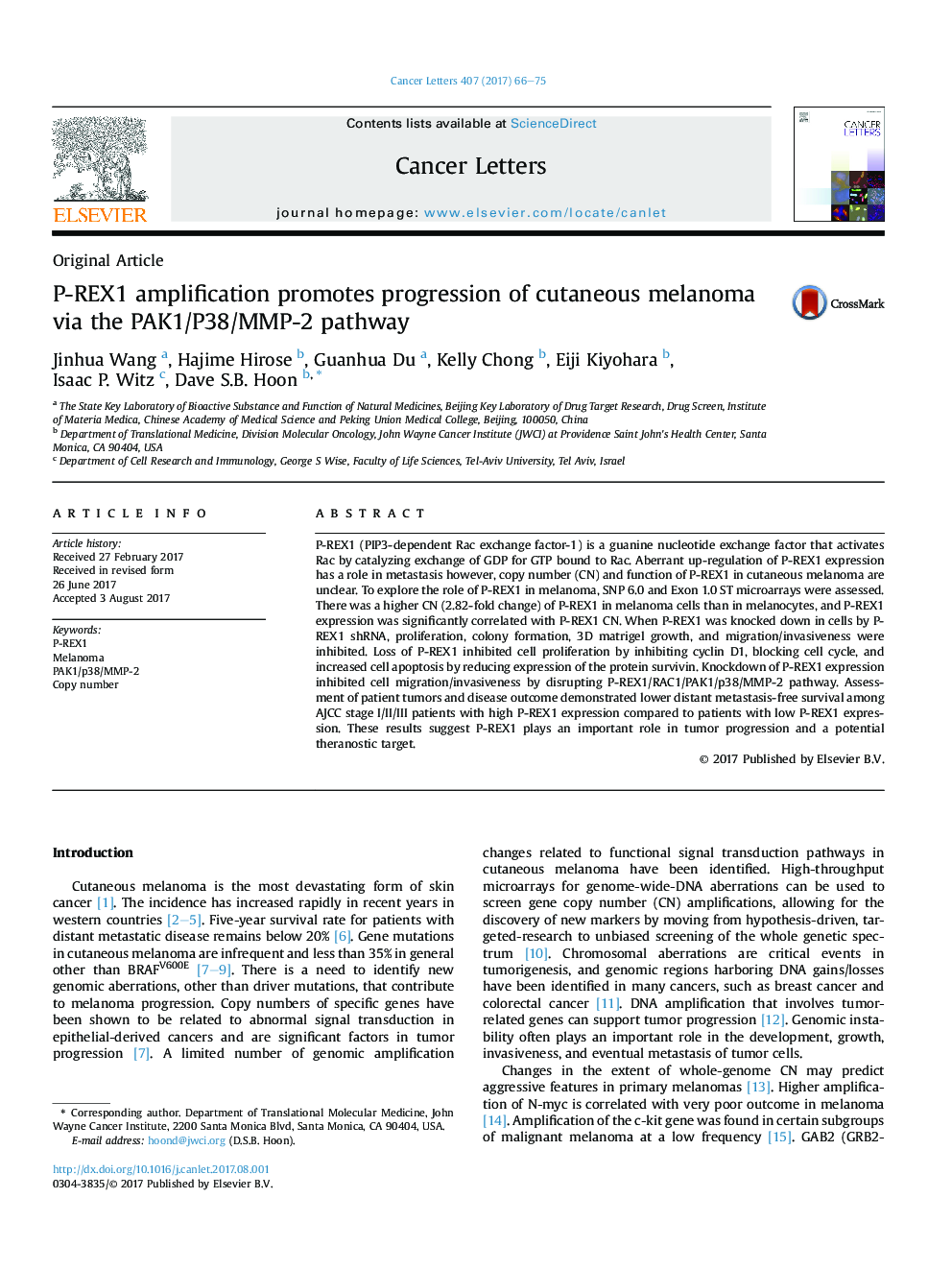| Article ID | Journal | Published Year | Pages | File Type |
|---|---|---|---|---|
| 5525280 | Cancer Letters | 2017 | 10 Pages |
â¢PREX-1 gene amplification promotes cutaneous melanoma progression.â¢PAK1/P38/MMP-2 pathway activated by PREX-1 amplification.â¢Apoptosis inhibition caused by loss of P-REX1 was related to expression of survivin.â¢P-REX1 regulates cell migration/invasion via P-REX1/RAC1/PAK1/p38/MMP-2 pathway.â¢High PREX-1 expression was related to poorer disease outcome in stage III patients.
P-REX1 (PIP3-dependent Rac exchange factor-1) is a guanine nucleotide exchange factor that activates Rac by catalyzing exchange of GDP for GTP bound to Rac. Aberrant up-regulation of P-REX1 expression has a role in metastasis however, copy number (CN) and function of P-REX1 in cutaneous melanoma are unclear. To explore the role of P-REX1 in melanoma, SNP 6.0 and Exon 1.0 ST microarrays were assessed. There was a higher CN (2.82-fold change) of P-REX1 in melanoma cells than in melanocytes, and P-REX1 expression was significantly correlated with P-REX1 CN. When P-REX1 was knocked down in cells by P-REX1 shRNA, proliferation, colony formation, 3D matrigel growth, and migration/invasiveness were inhibited. Loss of P-REX1 inhibited cell proliferation by inhibiting cyclin D1, blocking cell cycle, and increased cell apoptosis by reducing expression of the protein survivin. Knockdown of P-REX1 expression inhibited cell migration/invasiveness by disrupting P-REX1/RAC1/PAK1/p38/MMP-2 pathway. Assessment of patient tumors and disease outcome demonstrated lower distant metastasis-free survival among AJCC stage I/II/III patients with high P-REX1 expression compared to patients with low P-REX1 expression. These results suggest P-REX1 plays an important role in tumor progression and a potential theranostic target.
